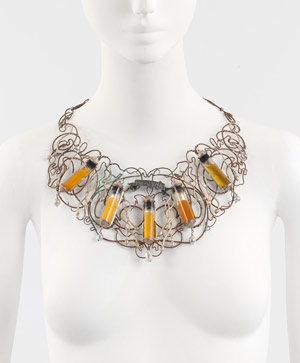Decrepit Birth, Hate Eternal,
3 Inches of Blood, The Black Dahlia Murder @
B.B. KingsJanuary 16, 2008
10:43pm
A Conversation from Last Night
Me: Hello.
Nick's Mom (Hippy, in her 60s): Hi!
Me: Hey, it's just me. Nick and Lev went to the corner store. They'll be here in a few minutes.
Mom: Oh. Did you go out to dinner?
Me: No, we actually went to a concert.
Mom: Oh! What did you see?!
Me: Well, we went to see Hate Eternal, but we didn't get to see them. They had car trouble this morning on their way from D.C. There was another opening band though that was pretty good.
Nick's Dad (Also Hippy in his 60s): (What did they see?)
Mom: Gate Eternal.
Dad: Oh, Gate Eternal...
Me: No, no, HATE Eternal.
Mom and Dad: HATE ETERNAL?!
Me: Yeah, kind of an unfortunate name, but that's the genre. We didn't get to see them play though.
Dad: What happened?
Me: The sound guy said that their radiator over heated this morning on their way from a show last night in D.C.
Dad: They were consumed by the hate.
Me: It would seem that way.
Mom: So, uh... who were the other bands?
Me: The Headliner was Black Dahlia Murder, but we weren't there to see them. The band we all liked was Decrepit Birth.
Dad: (Decrepit Birth...)
Me: Yeah, they were awesome! Even though they were first and their sound was not very good coming through the P.A.
Dad: So, this sound guy was not the bearer of good things...
Me: (chuckles) No, not really.
Mom: So, the headliner was who?
Me: Black Dahlia Murder. When they went on, we decided to leave.
Mom: That bad?
Me: Well, I guess they are ok, but they are a total rip off of this other band
At the Gates, right down to a t-shirt they were selling at the concert. And they aren't even half as good, so, yeah, they suck. We left.

---
Decrepit Birth MyspaceHate Eternal Myspace3 Inches of Blood MyspaceThe Black Dahlia Murder Myspace







